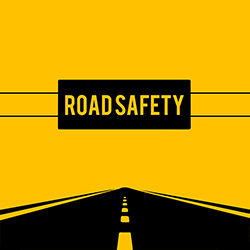Introduction
Traffic safety is more than a set of rules and regulations; it’s a comprehensive approach to ensuring the well-being and protection of every individual on the road. With the exponential increase in vehicular traffic worldwide, the significance of traffic safety has grown tremendously, impacting the lives of millions.
The Scope of the Issue
Traffic accidents have become a global epidemic, with repercussions that extend beyond physical injuries and fatalities. They also result in enormous financial burdens, both in terms of healthcare costs and economic productivity losses. The complexity of traffic safety is such that it encompasses various factors, including human behavior, vehicle design, road conditions, and environmental aspects.
A Multifaceted Challenge
Addressing traffic safety is a multifaceted challenge that requires coordinated efforts from different sectors of society. Governments, organizations, and individuals must work together to create safe environments, promote responsible behavior, and utilize technological advancements.
Education and Awareness
Education and awareness campaigns help inculcate safe driving habits, pedestrian behavior, and responsible road usage. These campaigns can dramatically influence attitudes and actions, making them vital components of traffic safety efforts.
Technological Innovations
Technological innovations have introduced new dimensions to traffic safety, with advancements in vehicle design, traffic management, and information dissemination. These technologies hold the potential to revolutionize safety measures and contribute significantly to reducing accidents.
Community Engagement
Community engagement plays a critical role in fostering a culture of safety. Local communities must be involved in planning and implementing safety measures, as they understand the unique challenges and needs of their specific regions.
Understanding the Importance of Traffic Safety
A Global Concern
Traffic accidents are a leading cause of death and injuries worldwide. According to the World Health Organization, approximately 1.35 million people die each year as a result of road traffic crashes. These accidents not only cause grief and suffering but also have a significant economic impact.
The Role of Government and Organizations
Governments and organizations play a pivotal role in promoting traffic safety through the implementation of laws, regulations, and awareness campaigns. They are responsible for designing and maintaining safe infrastructure, enforcing traffic laws, and educating the public about safe road behaviors.
Key Principles of Traffic Safety
Defensive Driving
Defensive driving involves anticipating potential problems and reacting to them before they become dangerous. It requires awareness, good judgment, and a proactive approach to controlling the vehicle.
Road Signs and Signals
Understanding and obeying road signs and signals is fundamental to traffic safety. These signs are designed to guide, warn, and regulate traffic, helping to prevent accidents and maintain smooth traffic flow.
The Dangers of Distraction
Speeding is one of the leading causes of traffic accidents. Staying within speed limits allows drivers more time to react to unexpected situations and reduces the severity of collisions.
Distracted driving, including texting, talking on the phone, eating, or any other activity that takes attention away from the road, is a significant contributor to accidents. It’s crucial to stay focused and attentive while driving.
Safety Measures for Different Road Users
Safety for Drivers
- Regular Vehicle Maintenance
- Use of Seat Belts
- Avoiding Alcohol and Drugs
- Following Traffic Rules
Safety for Pedestrians
- Using Crosswalks
- Wearing Visible Clothing at Night
- Observing Traffic Signals
Safety for Cyclists
- Wearing Helmets
- Using Proper Lighting
- Following Road Rules
Technological Advancements in Traffic Safety
Advanced Driver Assistance Systems (ADAS)
Modern vehicles are equipped with ADAS that provide features like adaptive cruise control, lane departure warnings, and automatic emergency braking. These technologies enhance safety by aiding the driver in controlling the vehicle and avoiding collisions.
Smart Traffic Management
The integration of smart technologies into traffic management systems allows for real-time monitoring and control of traffic flow. It helps in reducing congestion, minimizing accidents, and enhancing overall road safety.
Mobile Apps for Road Safety
Various mobile applications provide real-time traffic updates, navigation assistance, and safety alerts. Utilizing these apps can contribute to a safer driving experience.
Conclusion
Traffic safety is an essential aspect of our daily lives that requires collective responsibility and action. From understanding the fundamental principles of traffic safety to adopting safe practices and utilizing technological advancements, every road user has a part to play in ensuring safety.
Governments, organizations, and individuals must continue to work together to foster a culture of safety on the roads. By prioritizing education, enforcement, and innovation, we can significantly reduce accidents and save lives.
In the end, traffic safety is not just about rules and regulations; it’s about valuing human life and well-being. The road to safety is a shared journey, and we must all commit to making it a priority.

